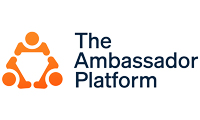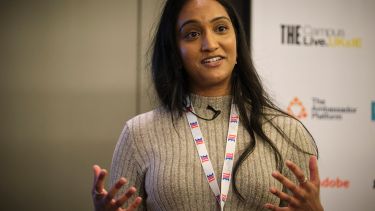Universities may find it hard to engage with prospective students from under-represented backgrounds. TAP is a digital platform that hopes to change that
Enrolling in higher education can be challenging for any individual, but for students from under-represented backgrounds, it can be particularly daunting. An informational deficit due to language, culture or a lack of familiarity with higher education in their school, family or community can create a chasm between what an institution is really like and how it is perceived by a prospective student.
During a Times Higher Education webinar, titled “Closing the insight gap: An experience-based approach to diversity”, held in partnership with experience communication management platform The Ambassador Platform (TAP), leaders from academia and industry discussed how they had used the platform to close the “insight gap” that prevents institutions meeting their diversity and inclusion goals.
Dr Foteini Dimirouli, outreach fellow at Keble College, University of Oxford, explained that TAP had proved an invaluable asset when broadening Oxford’s access and outreach agenda, explaining its demanding application process and debunking stereotypes about the university. “We found that it was very hard to access particular parts of the UK and it was difficult for students from these areas to visit Oxford,” she said. “TAP looked like a very good way for us to gain a more immediate sort of access to these students.”
These benefits were echoed by Alden Williams, assistant director of international marketing and recruitment at INTO, the University of Alabama at Birmingham, who praised the way the platform allowed prospective students to ask as many questions as they liked about an institution. “There is lots of information about how higher education works in the US that many international students simply aren’t aware of,” Williams explained. “We live in an age of information overload but when it comes to international students, it’s often very difficult for them to find the information that’s meant for them. This is where TAP is really useful.
The fact that prospective students can speak directly to current students through TAP also adds a layer of authenticity. Dr Dimirouli found that prospective students visiting Oxford most valued the opportunity to speak with current students. For her, this was a key reason for launching the partnership with TAP. “The platform allowed us to tailor our access agenda because students were able to select who they wanted to interact with through the chat feature on the basis of background, ethnicity or subject of study. It was a way of empowering students.”
For Williams, the benefits were similarly clear. “The peer-to-peer marketing and authenticity that you get with genuine student connections are unparalleled,” she said.
Although TAP does not promise to offer a quick fix to the diversity problems facing higher education institutions today, the platform allows students to seek information unfiltered by university PR or communication teams. It lets them close the insight gap on their own terms.
Watch the session on demand above or on the THE Connect YouTube channel.
Find out more about TAP.

